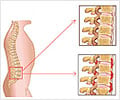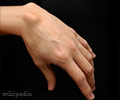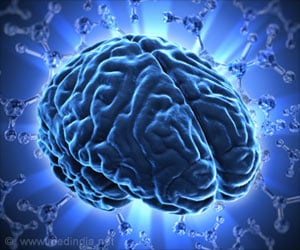Johns Hopkins scientists now have evidence that the bone underneath the cartilage is also a key player and exacerbates the damage, as osteoarthritis (OA) is often seen as a problem primarily of the cartilage that cushions joints.

The prevailing theory on the development of OA focuses on joint cartilage, suggesting that unstable mechanical pressure on the joints leads to more and more harm to the cartilage-and pain to the patient-until the only treatment option left is total knee or hip replacement.
The new theory suggests that initial harm to the cartilage causes the bone underneath it to behave improperly by building surplus bone. The extra bone stretches the cartilage above and speeds its decline.
"We think that the problem in OA is not just the cartilage 'cushion,' but the bone underneath," said Xu Cao, Ph.D., director of the Center for Musculoskeletal Research in the Department of Orthopaedic Surgery at the Johns Hopkins University School of Medicine.
Joints are formed at the intersection of two bones. To prevent the grinding and wearing down of the ends of the bones, they are capped with a thin layer of cartilage, which not only provides a smooth surface for joint rotation but also absorbs some of the weight and mechanical strain placed on the joint. The degeneration of this protective layer causes extreme pain leading to limited mobility.
Cao said degeneration is most frequently initiated by instability in the load-bearing joints of the knee and hip caused by injury or strain, so athletes, overweight people and people whose muscles are weakened by aging are at highest risk of developing OA.
Advertisement
Cao explained that the lack of effective drugs or a complete understanding of the underlying process that causes OA to progress led his group to search for a different underlying cause.
Advertisement
Using mice with ACL (anterior cruciate ligament) tears, which are known to lead to OA of the knee, the researchers found that, as soon as one week after the injury, pockets of subchondral bone had been "chewed" away by cells called osteoclasts. This process activated high levels in the bone of a protein called TGF-beta1, which, in turn, recruited stem cells to the site so that they could create new bone to fill the holes. Cao calls these pockets of new bone formation "osteoid islets."
But the bone building and the bone destruction processes were not coordinated in the mice, and the bone building prevailed, placing further strain on the cartilage cap. It is this extraneous bone formation that Cao and his colleagues believe to be at the heart of OA, as confirmed in a computer simulation of the human knee.
With this new hypothesis in hand, complete with a protein suspect, the team tried several methods to block the activity of TGF-beta1. When a TGF-beta1 inhibitor drug was given intravenously, the subchondral bone improved significantly, but the cartilage cap deteriorated further.
However, when a different inhibitor of TGF-beta1, an antibody against it, was injected directly into the subchondral bone, the positive effects were seen in the bone without the negative effects on the cartilage. The same result was also seen when TGF-beta1 was genetically disrupted in the bone precursor cells alone.
Cao said they are already working to develop a clinical trial to test the efficacy of locally applied TGF-beta1 antibodies in human patients at early stages of OA.
If successful, their nonsurgical treatment could make OA - and the pain and debilitation it causes - halt in its tracks, he said.
The finding was reported in Nature Medicine.
Source-ANI












